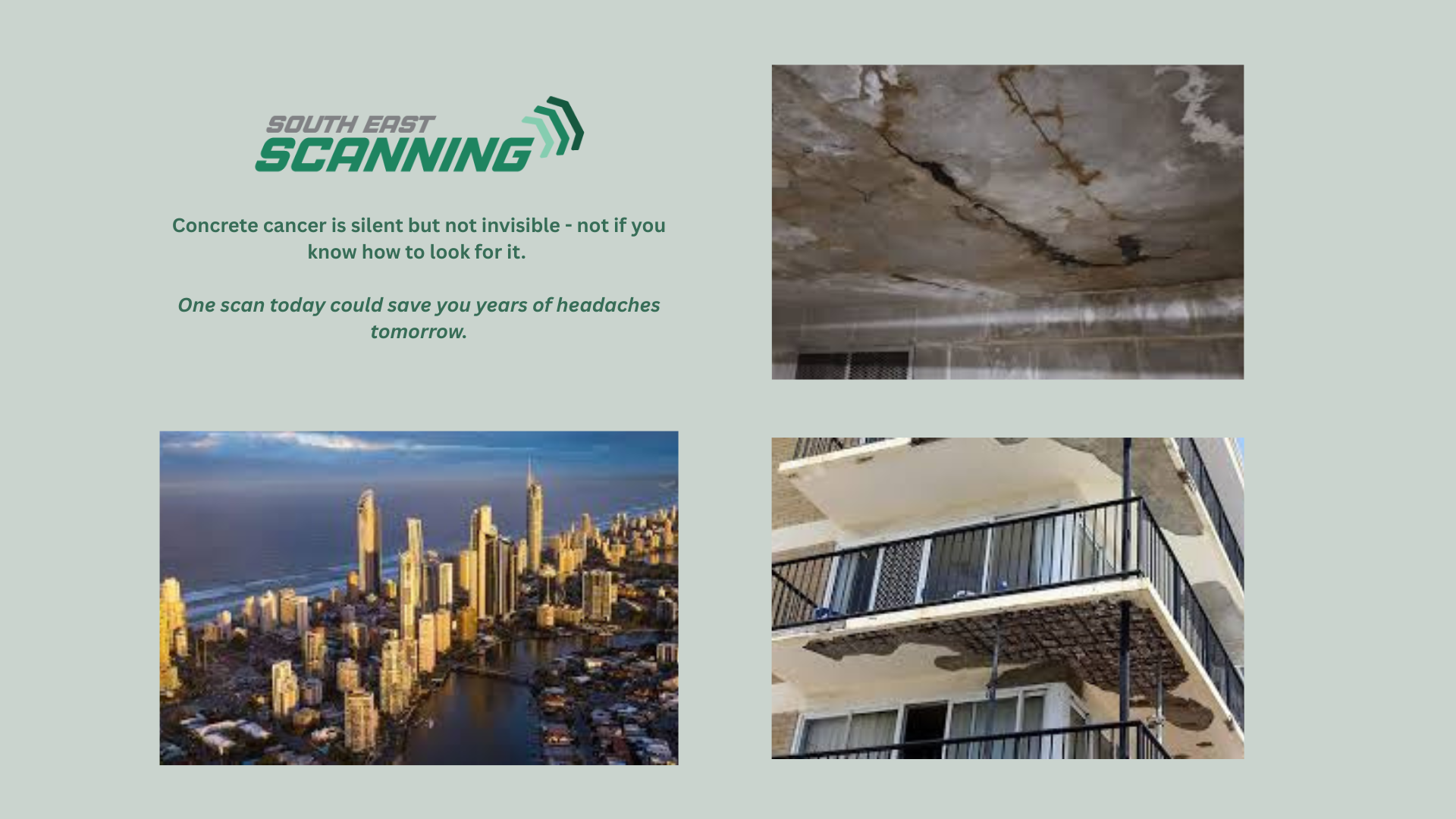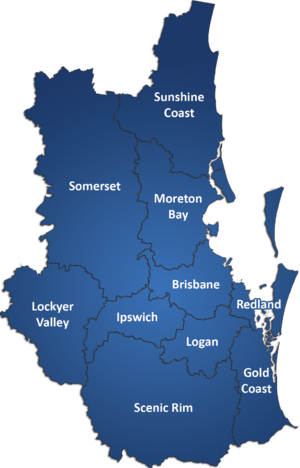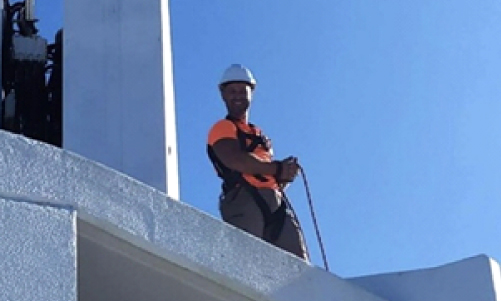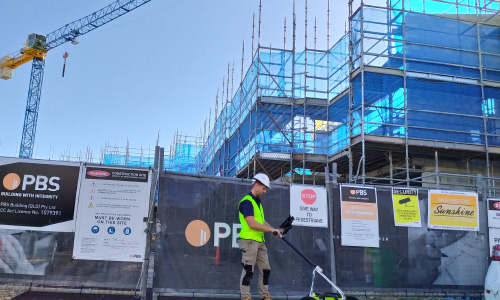Concrete is one of the most widely used building materials in the world -strong, durable, and versatile. But even concrete isn't invincible. Over time, it can suffer from a condition often referred to as "concrete cancer": the progressive deterioration caused by spalling, corrosion of reinforcing steel, and moisture ingress. Left undetected, it can compromise a structure's strength, safety, and usability—and lead to expensive repairs or even demolition. At South-East Scanning, we're seeing an increasing demand for early detection of concrete cancer, especially in ageing buildings and coastal infrastructure across Brisbane, the Gold Coast, and the Sunshine Coast. Fortunately, Ground Penetrating Radar (GPR) is a powerful tool in this fight. Fast, non-destructive, and highly accurate, GPR helps detect underlying issues in concrete before they become visible or critical.
What is Concrete Cancer?
Concrete cancer begins when moisture penetrates the concrete surface and reaches the steel reinforcement (rebar) embedded within it. This leads to steel corrosion, which expands and causes the surrounding concrete to crack, flake, or spall. Over time, the process accelerates as cracks allow more water in, worsening the cycle.
- Typical signs of concrete cancer include:
- Cracking or crumbling concrete
- Rust stains or bubbling on surfaces
- Delaminated or "hollow sounding" areas
- Exposed or rusting reinforcement
By the time these symptoms are visible, significant damage may have already occurred. That’s why early detection is crucial.

How GPR Can Help
Ground-penetrating radar uses high-frequency electromagnetic waves to scan beneath the surface of concrete and detect anomalies. At South-East Scanning, we use high-resolution GPR systems to assess the internal health of concrete slabs, walls, beams, and columns.
- GPR can identify:
- Areas with delamination or air gaps
- Zones of moisture intrusion
- Corroded rebar and reduced rebar cover
- Voids and poorly compacted concrete (honeycombing)
Unlike core sampling or drilling, GPR is entirely non-invasive. It allows for fast scanning of large areas without disrupting operations or damaging the structure. For asset managers, engineers, and facility owners, this means you can diagnose problems early and prioritise repairs strategically.
Real-World Applications
In a recent scan of a coastal apartment block in Main Beach on the Gold Coast, our team was called in after residents noticed rust stains on several balconies. Using GPR, we mapped out the internal reinforcement and identified significant moisture ingress and rebar corrosion long before it was visible from the surface. This early detection allowed engineers to carry out targeted remediation rather than a full-scale balcony rebuild, saving time and money.
Similarly, on a project in inner-city Brisbane, we were engaged by a strata management company concerned about cracking in their multi-storey car park. GPR revealed extensive delamination in the suspended slab and areas of shallow rebar cover – conditions that would have worsened without intervention. Our report enabled the client to develop a repair plan and implement preventative maintenance measures before severe degradation set in.
The Coastal Factor
Buildings in coastal regions like the Sunshine Coast face increased risk due to constant exposure to salt-laden air and high humidity. Salt accelerates the corrosion of embedded steel, making early detection even more critical in these environments. GPR is beneficial here because it helps detect damage in high-risk zones (balconies, podiums, retaining walls, etc.) without requiring intrusive testing.
A Smarter Way to Maintain Infrastructure
GPR isn’t just for emergency assessments – it’s vital to any preventative maintenance strategy. Regular scanning helps building owners and asset managers establish a condition baseline, track changes over time, and address issues while they’re still manageable. It also provides peace of mind by ensuring that reinforced concrete components perform as intended.
At South-East Scanning, we don’t just deliver raw data. We provide clear, actionable reports identifying risk areas, explaining findings in plain language, and supporting engineering decisions. Our experienced team knows how to interpret subtle GPR signals and spot early signs of deterioration that might otherwise go unnoticed.
Conclusion
Concrete cancer is silent but not invisible – not if you know how to look for it. Ground-penetrating radar scanning offers a smart, efficient, and proactive approach to protecting your structures and investments. Whether you manage a high-rise, an industrial facility, or a public asset, early detection is the best way to stay ahead of damage, avoid costly repairs, and extend the life of your concrete.
If you’re responsible for infrastructure or property and unsure of your concrete’s health, let’s talk. One scan today could save you years of headaches tomorrow. Get Your Fast, Free Quote Today!
#ConcreteScanning #GPRTechnology #StructuralIntegrity






